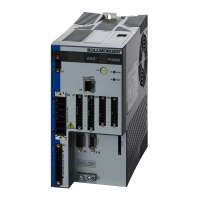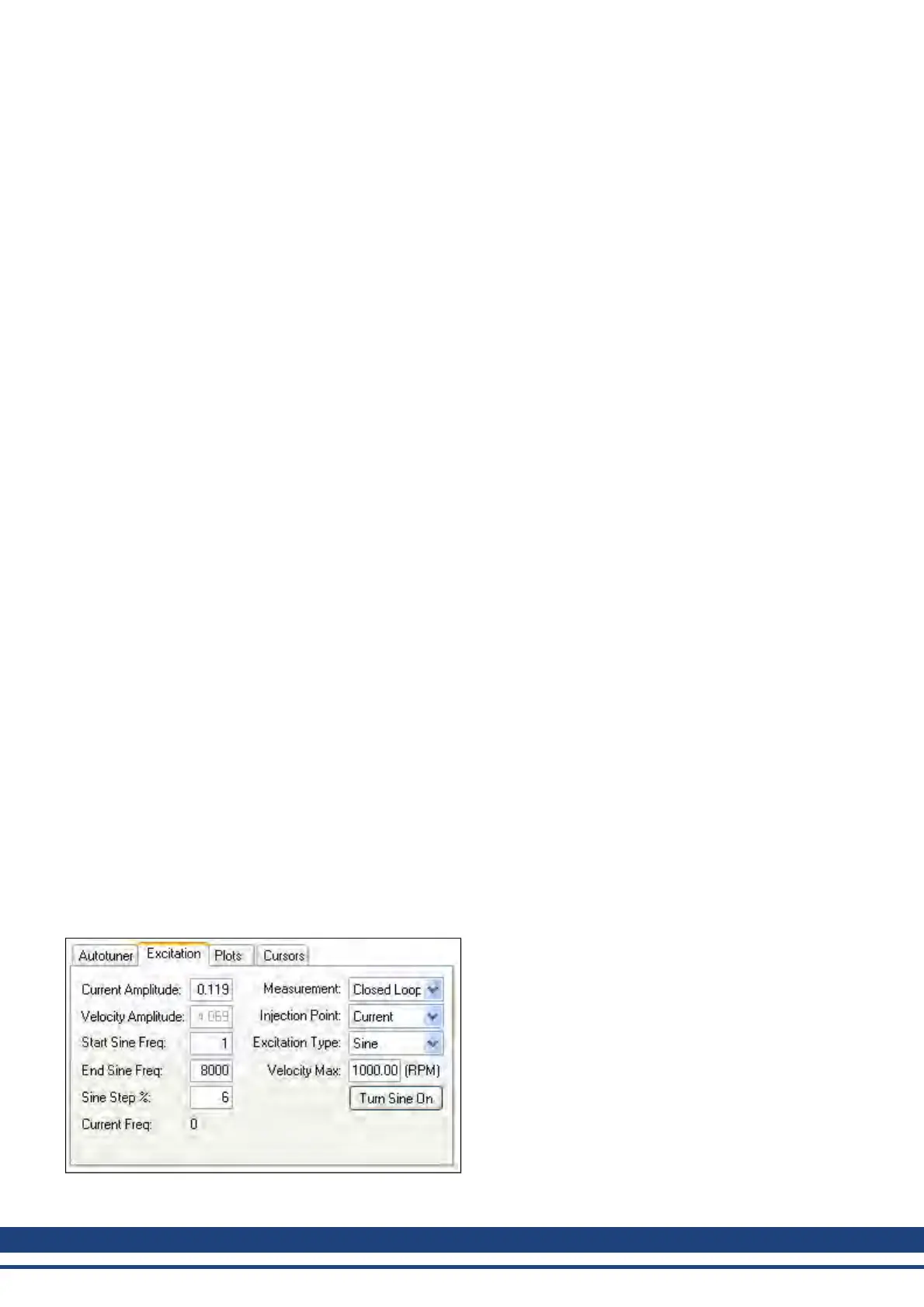AKD User Guide | 14 Tuning Your System
l
PRB uses a pseudo random binary signal to excite the system. The signal is either + or – current or veloc-
ity amplitude (depending the injection point). The signal contains a frequency spectrum that goes from a
lower limit equal to the larger of:
(16,000/(2^BODE.PRBDEPTH * Excite Gap)) or 16,000/(Excite Gap * Number Points) Hz
to a higher limit equal to:
(16,000/Excite Gap) Hz
BODE.PRBDEPTH is set to 19 by the autotuner. The richness of the frequency spectrum comes from var-
iance in the phase of the signal, not the amplitude.
l
Sine requires that you specify the start frequency, end frequency, and frequency step size. The sine
sweep takes significantly longer than a noise or PRB measurement, but is often cleaner. Be careful when
selecting a step size: too large of a step size may miss important resonances, and too small of a step size
increases measurement time.
FFT Points
The FFT Pointsbox is only visible and applicable in noise and PRB measurements. FFT Points sets the res-
olution of the FFT’s measurement. The frequency resolution is equal to
16,000/(Excite Gap * FFT Points)
By increasing FFT Points, the resolution becomes finer, but noise in the frequency response increases.
Excite Gap
The Excite Gap box is only visible and applicable in noise and PRB measurements. This box sets how
frequently the test excitation is updated. The excite gap minimum value is 1; this value is normally set to 2 for
autotuning. The excite rate is 16,000/gap. You can limit high frequency excitation by increasing the Excite Gap
value.
Number Points
The Number Points box is only visible and applicable in noise and PRB measurements. This box sets the
length of recording while measuring the frequency response of the system. The measurement length is:
Number Points * Excite Gap/16,000 seconds
Velocity Max
The Velocity Max box allows the user to specify the maximum velocity the motor should be able to move while
performing excitation. This box is not in effect for normal drive operation; it is only visible during the autotuner
excitation phases. This value is implemented as soon as the autotuner begins, and as soon as the autotuner is
finished, the previous overspeed threshold (VL.THRESH) is restored.
156 Kollmorgen | December 2010

